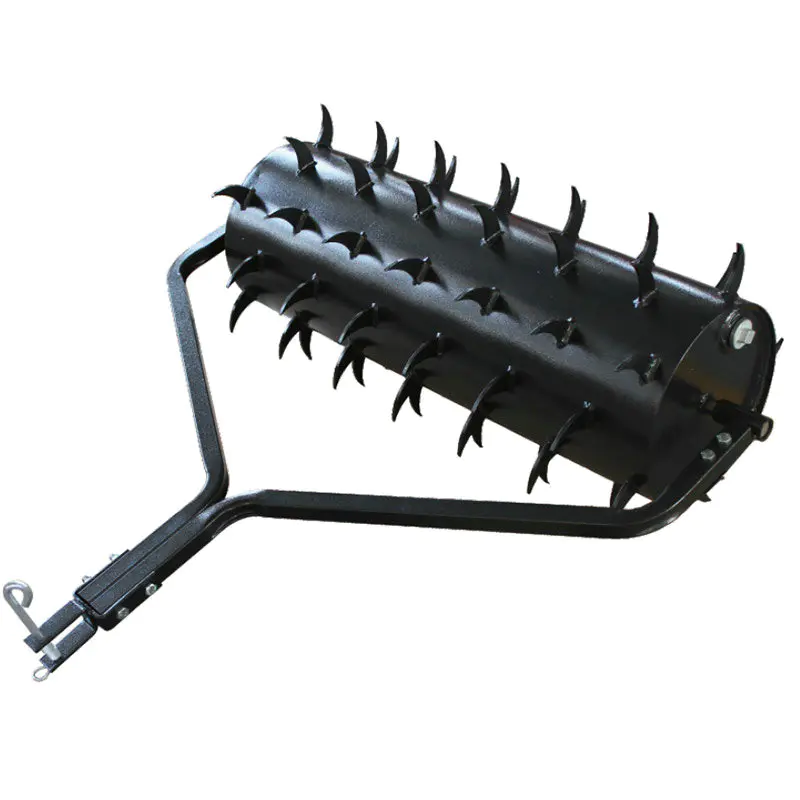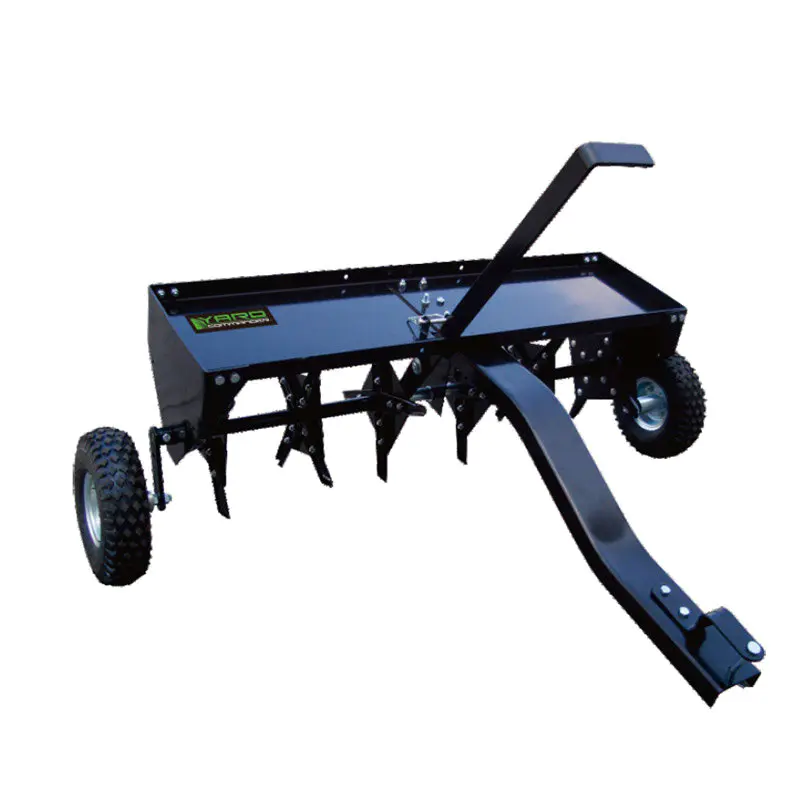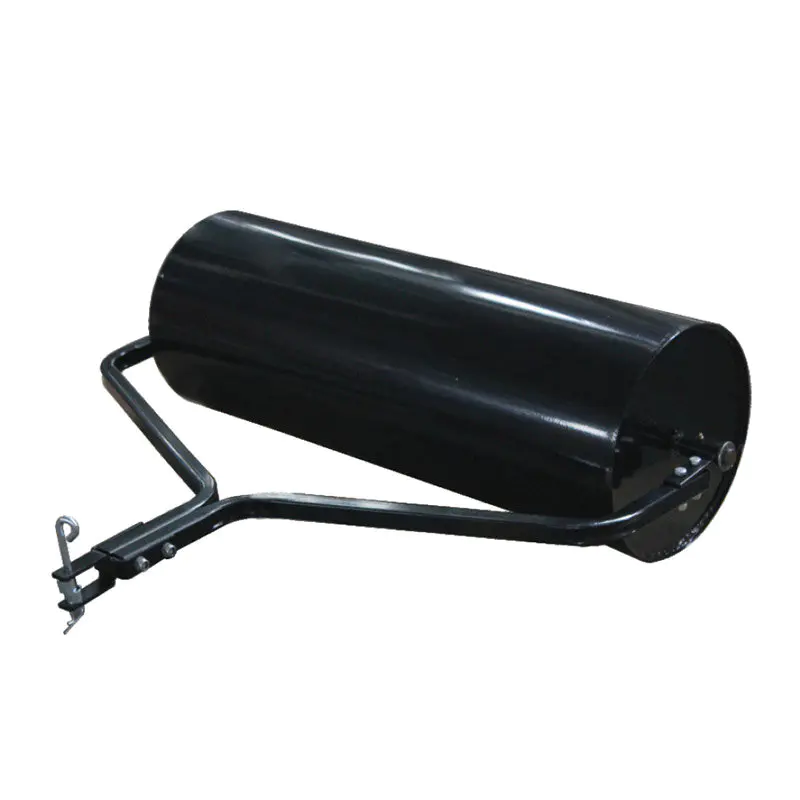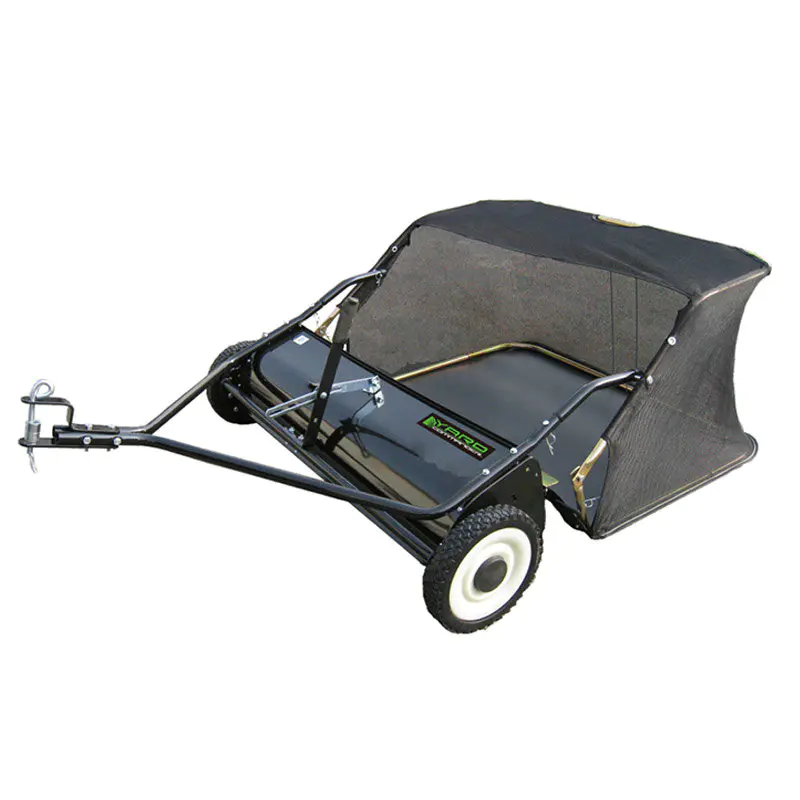In the realm of efficient lawn and property maintenance, the tow behind lawn sweeper stands out as a versatile and labor-saving tool. For property owners, landscapers, and groundskeepers, the primary appeal of this equipment is its ability to automate the collection of debris such as grass clippings, leaves, pine needles, and twigs. However, not all sweepers are created equal, and one feature that significantly differentiates standard models from superior ones is the high-dump mechanism. While the basic function of a tow behind lawn sweeper is to collect debris, the process of unloading that debris is where user experience and efficiency are truly tested.
Understanding the Basic Operation of a Tow Behind Lawn Sweeper
Before delving into the specifics of the high-dump feature, it is essential to understand the fundamental operation of a standard tow behind lawn sweeper. The core principle is elegantly simple. The unit is attached to a riding mower, utility vehicle, or lawn tractor via a hitch. As the vehicle moves forward, the ground-driven wheels of the sweeper transfer power to a system of gears or chains, which in turn rotates a long, cylindrical brush. This brush, often made of stiff bristles or wire, spins rapidly, lifting debris from the turf surface and flicking it upward and backward via a series of impellers into a large collection hopper. This process allows for the quick and thorough cleaning of large areas of lawn, turf, or other flat surfaces without the back-breaking effort of manual raking and bagging. The hopper, typically constructed from durable polyethylene or steel, has a finite capacity. Once full, the operator must stop the towing vehicle, dismount, and empty the collected material. It is at this critical juncture—the unloading process—that the design of the sweeper, specifically the presence or absence of a high-dump feature, becomes profoundly important. Searches for how does a lawn sweeper work and tow behind sweeper operation indicate a strong user interest in the underlying mechanics, which sets the stage for appreciating the engineering behind the high-dump mechanism.
Defining the High-Dump Mechanism
A high-dump feature is an engineered mechanism on a tow behind lawn sweeper that allows the operator to hydraulically or mechanically elevate the entire collection hopper to a significant height for unloading. Instead of requiring the user to bend over and shovel out debris from a low-lying container, the high-dump system lifts the hopper to a level that facilitates direct dumping into a larger receptacle, such as a utility cart, truck bed, or compost bin. The activation of this feature is typically controlled from the operator’s seat on the towing vehicle, either via a hand-operated lever connected to a cable or, in more advanced models, an electrically powered actuator. This control triggers a robust lifting arm or a hydraulic cylinder that pivots the hopper upward and often slightly forward, using a hinged point near the sweeper’s frame. The angle of lift is designed to be steep enough—frequently exceeding 45 degrees—to ensure a complete and clean discharge of even damp or compacted materials. This sophisticated solution directly addresses the primary limitation of non-dump or low-dump models, transforming a tedious, manual task into a seamless, integrated part of the sweeping workflow. For buyers comparing specifications, understanding the high-dump mechanism is a key part of the lawn sweeper buyer’s guide.
The Primary Benefit: Enhanced Ergonomics and Operator Safety
The most immediate and tangible benefit of a high-dump feature is the dramatic improvement in ergonomics and the consequent enhancement of operator safety. Manually emptying a standard tow behind lawn sweeper is a physically demanding task. It involves stooping, bending, and twisting, often while handling heavy, awkward loads of wet grass or leaves. This repetitive strain is a common cause of musculoskeletal injuries, particularly in the lower back, shoulders, and knees. For landscaping professionals who may empty a sweeper dozens of times a day, this cumulative physical stress represents a significant occupational hazard.
The high-dump feature effectively eliminates this risk. By allowing the operator to remain seated on the tractor and unload the hopper into a raised container, it removes the need for bending and manual shoveling entirely. This ergonomic unloading process is not merely a convenience; it is a critical safety intervention. It reduces fatigue, minimizes the risk of acute injuries from lifting heavy loads, and prevents the long-term development of chronic pain conditions. This benefit is a major selling point for commercial entities concerned with workforce safety and productivity, as a safer worker is a more efficient and consistent one. Furthermore, it makes the tow behind lawn sweeper accessible to a wider range of users, including those with physical limitations that would preclude them from using a standard model. The value of this operator safety benefit cannot be overstated in a commercial context.
The Efficiency Advantage: Streamlining Workflow and Saving Time
In a commercial landscaping or property management setting, time is synonymous with money. Any feature that accelerates workflow without compromising quality is a direct contributor to the bottom line, and the high-dump feature is a prime example of such an efficiency booster. Consider the workflow of a standard sweeper: the operator must stop the tractor, dismount, locate a shovel or tool, manually empty the heavy hopper, ensure it is clean, remount the tractor, and resume work. This cycle, repeated frequently throughout the day, consumes a substantial amount of non-productive time.
A tow behind lawn sweeper equipped with a high-dump mechanism revolutionizes this process. The workflow becomes seamlessly integrated: the operator drives to a centralized collection point—such as a trailer or a large compost bin—activates the dump lever from the seat, empties the hopper in a matter of seconds, and immediately continues sweeping. There is no dismounting, no searching for tools, and no physical exertion. This time-saving operation can reduce the unloading time by well over half for each cycle. Over the course of a full day’s work on a large property, such as a park, golf course rough, or extensive estate, the cumulative time savings can be substantial, allowing a single operator to complete jobs faster or manage larger areas within the same timeframe. This efficient debris collection capability is a key factor for businesses looking to optimize their operational protocols.
Improved Debris Management and Versatility
A less obvious but equally valuable benefit of the high-dump feature is the improvement it brings to overall debris management. Emptying a standard sweeper often involves dumping the contents onto a tarp or directly onto a pile on the ground, which later requires a second handling step to load it into a truck or cart for final disposal. This double-handling of material is inefficient and increases the total labor required for the job.
A high-dump tow behind lawn sweeper enables direct, targeted unloading. The elevated hopper can dump its contents directly into a utility vehicle, a landscape trailer, or the bed of a full-sized pickup truck. This facilitates a “one-touch” debris management system where materials are collected and transferred to their final transport vessel without ever being touched or handled a second time. This streamlined process is not only faster but also cleaner, as it reduces the chance of debris being scattered during intermediate transfer steps.
Furthermore, this capability enhances the tool’s versatility. It makes the sweeper ideal for larger, more complex jobs where debris needs to be collected from a wide area and centralized for removal. Whether the task is clearing a large wooded lot of fallen branches and pine cones or cleaning up after a major seasonal leaf drop, the ability to dump directly into a high-sided container is a significant logistical advantage. This versatile debris handling makes the equipment a more integral part of a comprehensive landscape maintenance system.
Durability and Long-Term Investment Value
Investing in a tow behind lawn sweeper with a high-dump feature often correlates with a higher initial cost compared to a basic model. However, this cost should be evaluated in the context of long-term value and durability. Manufacturers that incorporate high-dump mechanisms typically design these models for more rigorous, commercial-grade use. This means the entire unit—from the frame and hitch to the hopper and brush assembly—is built with heavier-duty materials and more robust construction.
The high-dump feature itself contributes to the sweeper’s longevity. Manual unloading with a shovel or rake can inadvertently damage the interior of the hopper, scratch protective coatings, or bend the hopper’s edges over time. The controlled, mechanical dumping action prevents this kind of accidental abuse. The hopper is simply tipped and returned to its position, suffering no wear from tools. This careful treatment helps maintain the sweeper’s structural integrity and appearance over many years of service.
For a buyer, this translates to a better return on investment. A commercial-grade tow behind lawn sweeper with a high-dump feature is not a disposable piece of equipment; it is a long-term asset for a business. Its durability means lower lifetime costs, reduced frequency of replacement, and greater reliability on the job. When considering the total cost of ownership, including maintenance, potential downtime, and replacement cycles, the higher-quality build that accompanies a high-dump model often makes it the more economically sound choice for serious users. This makes it a key consideration in any commercial sweeper specification.
Comparative Analysis: High-Dump vs. Standard Models
To clearly illustrate the practical differences, the table below provides a side-by-side comparison of key operational aspects between a high-dump and a standard tow behind lawn sweeper.
| Feature | High-Dump Model | Standard Model |
|---|---|---|
| Unloading Process | Mechanical/Hydraulic lift controlled from tractor seat. | Manual, requiring operator to dismount and use tools. |
| Operator Physical Strain | Minimal; no bending, lifting, or shoveling. | High; repetitive stooping and manual labor required. |
| Unloading Time per Cycle | Very fast (typically 10-20 seconds). | Slow (can take several minutes). |
| Debris Handling | Direct disposal into carts, trucks, or bins; “one-touch” system. | Often requires intermediate dumping and secondary handling. |
| Ideal User | Commercial landscapers, large property owners, users with physical concerns. | Homeowners with small to medium properties and minimal debris. |
| Long-Term Durability | Generally higher due to commercial-grade construction and no tool damage. | Can be lower due to potential for damage during manual unloading. |
| Initial Investment | Higher. | Lower. |
This comparison highlights that the choice between models is not merely about features, but about matching the equipment to the scale of the task and the priorities of the user. For a homeowner with a small yard, a standard model may suffice. For any professional application or large-scale property maintenance, the advantages of the high-dump model are overwhelmingly clear.
The question of what benefits a high-dump feature provides on a tow behind lawn sweeper reveals a depth of consideration that goes far beyond a simple convenience. While the core function of any sweeper is debris collection, the high-dump mechanism fundamentally enhances the entire post-collection process. Its primary contributions—drastically improved ergonomics and operator safety, significant gains in workflow efficiency and time savings, and superior debris management versatility—are transformative for commercial operations and serious property maintenance. When combined with the typically more durable construction of these models, the high-dump feature positions a tow behind lawn sweeper not as a simple garden tool, but as a strategic investment in productivity and long-term equipment value. For wholesalers and buyers evaluating the landscape of available equipment, understanding these benefits is essential for recommending and selecting the right tool for the job, ensuring that the end-user is equipped with a solution that is not only effective in its task but also intelligent in its operation.

 see more
see more
 see more
see more
 see more
see more
 see more
see more


